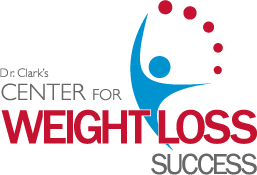That’s right – Thanksgiving dinner is right around the corner. For many Americans, it is the largest single meal of the year. Why do so many feel the need to gorge themselves that day? The turkey and stuffing is so plentiful that it’s falling off the plate. Yes, it’s tradition to serve multiple side dishes but can too much of a good thing be not so good? Absolutely.

Let’s take a look at how things got out of hand.
In the era of the supersized meal it’s often hard to recognize normal portion sizes. Restaurants use platters rather than plates. Fast-food joints have ‘super-sized’ everything on the menu. Giant bottles of soda, extra-large bags of chips and king-size candy bars are part of our everyday eating landscape. But unfortuantely, as our portion sizes get larger, so do our waistlines. And bigger packages can also sabotage portion control.
Research from the University of Illinois shows that people may tend to eat more food when it’s served in larger containers. When movie-goers were given the same amount of popcorn in containers of two different sizes, the people given the larger tubs ate 44 percent more.
So how does that relate? To keep portions in perspective, you need a tool to help you identify your portions as they relate to serving sizes. Being able to visualize recommended serving sizes by relating them to common household objects is an easy and useful technique. By comparing food portions to things you already recognize, you should be able to eyeball a food item and guesstimate how large it is. Carrying around a food scale is just not practical! It’s wise to weigh things occasionally to get an accurate idea of how big portions should be, but relating those measurements to common objects and teaching yourself to recognize them will be a great step toward achieving your weight-loss goals.
Some examples:
Your fist is about the same size as one cup of fruit or vegetables
Your thumb (tip to base) is the size of one ounce of meat or cheese
Your palm (without fingers) equals three ounces of meat, fish, or poultry
Your cupped hand equals one to two ounces of nuts
A glass of wine is 3-4 oz. That is less than 1/2 cup – measure it in your stemware in advance.
Let’s practice!
Once you have serving sizes committed to memory, you’ll be ready to fit them into your Thanksgiving Day plan.
Start the day off with plenty of water. Thirst is one of our most misinterpreted signals. If you are well hydrated, you are less likely to graze on things sitting around you.
Zero in on the veggie tray or cheese before the big meal. A few cubes of cheese or some raw crudites will take the edge off of your hunger. When it comes to cocktails, a small glass of wine may be the best option. Dry wines have less sugar than their sweet counterparts so a chardonnay or pinot grig would be a good choice.
If you are hosting the dinner, put some thought into the centerpiece and place settings. If your table is beautiful, the bowls of food won’t be missed. Consider using smaller plates with your traditional plates acting as chargers. Dish up the plates in the kitchen and leave the serving dishes on the counter. Starting with a salad and/or soup will make the meal more of a feast and your guests may not notice the smaller than usual servings in the main course.
Most vegetables are full of flavor and color and are extremely low in fat and calories. Bell peppers and brussel sprouts may become your new best friends!
Consider trying some of our lighter options in place of your traditional favorites this year. Remember that traditions always have a beginning, why not start one of your own! We have some recipes to share with you – download & print: CFWLS Thanksgiving Lite
Check out our selection on Pinterest!






 Cat Keller has a wealth of experience in marketing, e-marketing, advertising and customer service and manages our Weight Loss Nutritional Store. She is always planning something fun and exciting. special events, discounts, giveaways – it’s never a dull moment. She is happy to help you with questions you may have regarding our products or services. Cat is a graduate of William & Mary, where she studied Government/Pre-Law and minored in Marketing.
Cat Keller has a wealth of experience in marketing, e-marketing, advertising and customer service and manages our Weight Loss Nutritional Store. She is always planning something fun and exciting. special events, discounts, giveaways – it’s never a dull moment. She is happy to help you with questions you may have regarding our products or services. Cat is a graduate of William & Mary, where she studied Government/Pre-Law and minored in Marketing.